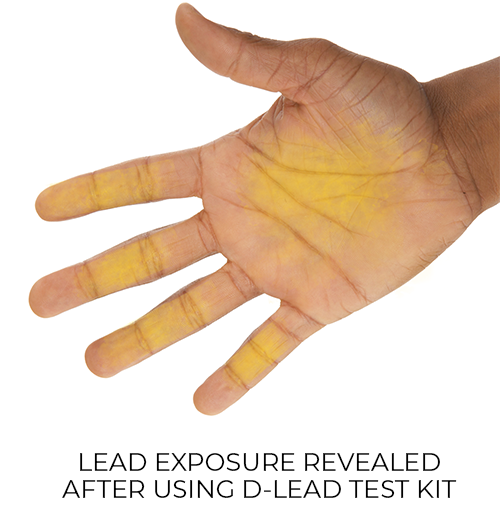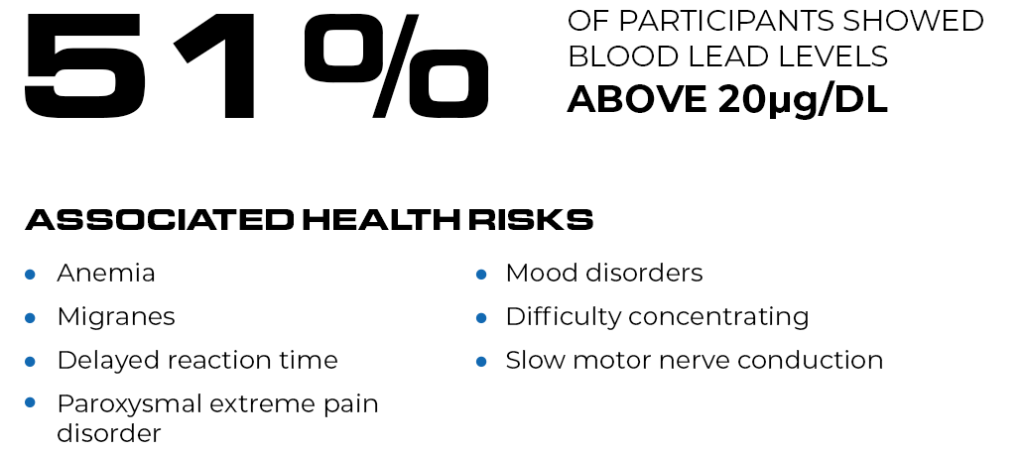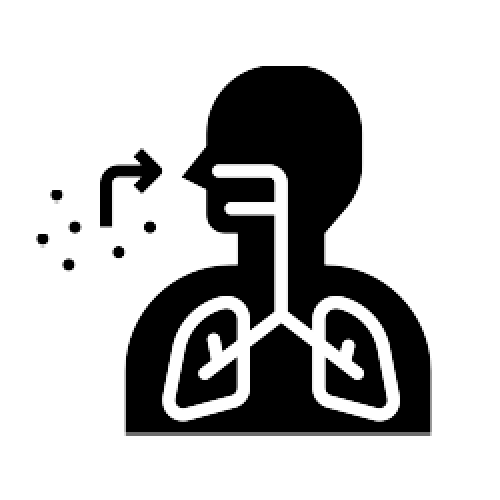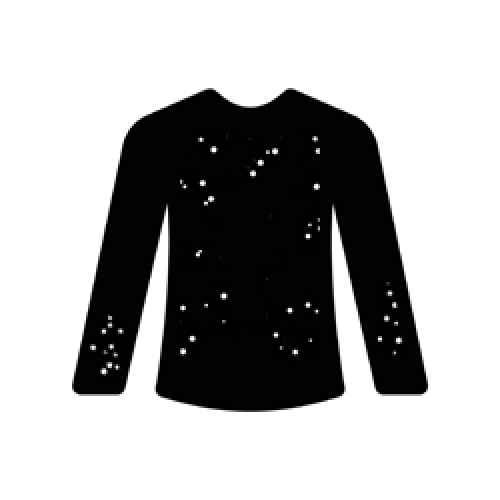THE DANGERS OF LEAD EXPOSURE IN LAW ENFORCEMENT
AN OVERLOOKED THREAT
Lead exposure in law enforcement is an extremely dangerous and often overlooked threat to police users. At the shooting range it is standard for police users to wear hearing protection and eye protection, but dangerously few precautions are being taken to mitigate lead exposure. With the frequency of firearm training, officers (and subsequently their families) can be exposed to lead on a consistent basis. Lead can remain on your hands and clothes long after your range session and become a continuous source of exposure if not properly cleaned.

LEAD EXPOSURE AT SHOOTING RANGES
A review of lead exposure at shooting ranges was published in the National Library of Medicine, where they examined 36 studies on lead exposures at shooting ranges [1]. The studies primarily focused on before-after comparisons of shooters, particularly shooters in law enforcement and military. The review concluded that nearly all of the participants in the 36 studies had elevated blood lead levels (BLL) above what is considered safe by the CDC and NIOSH. The average BLL among adults is 0.92 micrograms per decilitre (μg/dl)[2]. Blood lead levels above 5μg/dl is the case definition for an elevated blood level. Full results can be see on the chart below. As your body processes lead in the bloodstream, your BLL’s will naturally go down, but consistent and sustained exposure combined with BLL’s above 5μg/dL is where health complications from lead poisoning occurs.


Lead dust lingers in the air and collects on shooters’ hands and clothing. There are many factors that can help reduce lead exposure at shooting ranges, including respirators, suppressors, and improved ventilation. However, lead that remains on skin or clothing can be both ingested and inhaled by eating, rubbing your nose, mouth or eyes without properly cleaning your hands. When it comes to removing lead from your hands and clothing, regular soaps and detergents are not sufficient.
THE MOST COMMON WAYS LEAD CAN GET ABSORBED INTO YOUR BODY:

INHALATION

EATING

TOUCHING FACE

CLOTHING
Why is just washing your hands with regular soap and water not sufficient? Lead is difficult to wash off. Lead is heavy, sticky, difficult to wet and holds a static charge. All these factors make it adhere strongly to your skin, clothes, shoes, and gloves. Lead reacts with most soaps to form a soap scum, where instead of washing off the lead, you end up gluing it to the surface you are trying to clean. Typical skin cleaners only remove between 30-70% of lead from the skin. Long-term understanding of lead exposure and the increase in reported lead poisoning cases amongst law enforcement have lead to companies like ESCA Tech to develop their line of lead cleaning products that remove over 98% of lead from the skin/clothes. Rampart can work with your agency to find the best lead mitigation products for your needs.
RECOMMENDED LEAD CLEANING PROTOCOL:
- Clean hands with lead wipes or soaps after shooting
- Always clean hands before eating, avoid touching eyes/mouth/nose until you can clean your hands
- Clean firearms and exposed surfaces with surface wipes or cleaners
- Wash clothing/uniforms with lead detergent
- Shower after heavy range session with body wash



 RAMPARTCORPUSA.COM
RAMPARTCORPUSA.COM